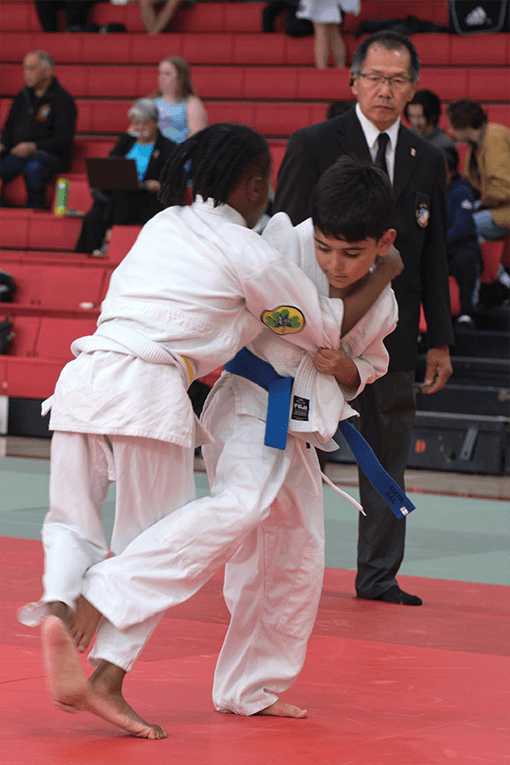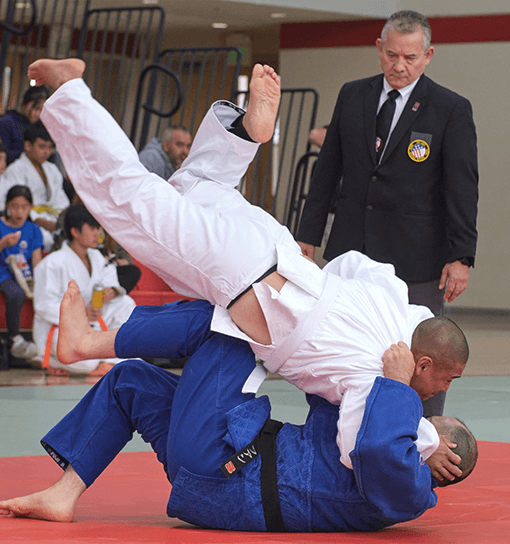Improve Your Judo through Distance Learning
Contest Rules
Referee Education
United States Judo Federation
Contest Rules and Referee Education
The USJF Contest Rules and Referee Education program includes a Parents Guide to contest rules. For individuals aspiring to become local or regional Judo referees, with a minimum age requirement of 12 years old, it offers five modules designed to establish a solid foundation in contest rules and referee education.

… Parents Guide
Contest Rules
The Importance of Parental Involvement in Youth Sports
Parents play a significant role in shaping their child’s sports experience. Children observe and emulate the behavior demonstrated by others, with parents often being the initial introduction to sports.
The level of parental involvement can directly impact whether a child enjoys the experience or not. A positive and enjoyable attitude from parents towards sports enhances a child’s interest and enjoyment in the activity.
It is important for parents to acquaint themselves with judo contest rules and comprehend their underlying purpose.
Module: Parents Guide to Judo Contest Rules
Module: Parents Guide to Judo Contest Rules offers a comprehensive overview of the competition regulations, encompassing fundamental aspects of a judo contest, bowing protocols, gripping techniques, scoring for throws and mat work, referee hand signals and calls, penalties, and scoreboard interpretation.
- This module serves as a valuable foundation for anyone seeking a deeper understanding of Judo contest rules, catering to individuals ranging from newcomers in the sport to parents and supporters eager to familiarize themselves with Judo.
At the conclusion of the Module, you will be able to;
- Identify contest and referee procedures.
- Recognize and identify scoring in Tachiwaza and Newaza
- Identify the penalties of Shido and Hansoku maki
…for Local/Regional Referee
Contest Rules and Referee Education
5 Modules
Module 1
Module 1 provides a thorough and comprehensive overview of competition regulations in judo. It covers essential elements of a judo contest, including bowing protocols, gripping techniques, scoring for throws and mat work, referee hand signals and calls, penalties, and scoreboard interpretation.
At the conclusion of Module 1, you will be able to;
- Identify contest and referee procedures.
- Recognize and identify scoring in Tachiwaza and Newaza
- Identify the penalties of Shido and Hansoku maki
Module 2
Module 2 expands on the comprehension of judo contest rules, incorporating additional details such as the Referee’s focus, positioning, and attire. It also includes examples of Ippon, Wazari, and Osaekomi, along with explanations of common penalties and their corresponding gestures.
At the conclusion, you will be able to;
- Describe the referee’s focus, positioning and attire
- Differentiate Scoring – Ippon, Wazari and Osaekomi
- Distinguish common penalties and their gestures.
Module 3
Module 3 furnishes additional illustrations of Ippon, Wazari, non-scoring throws, landings, and less common penalties along with their corresponding gestures.
Scoring
Nage waza Scoring
- Ippon or Wazari -Marginal landing examples
- Score or No Score – Continuation examples
Penalties
- Shido (Slight Penalty)
- Shido for an Illegal Move
At the conclusion of Module 3, you will be able to;
- Differentiate marginal landing examples of Scoring – Ippon and Wazari
- Distinguish score and no score landings
- Examine and distinguish penalty for lack of combativity
- Distinguish illegal moves in kumi-kata.
Module 4
Module 4 provides additional examples of Ippon, Wazari, non-scoring landings and less common penalities and their gestures, including direct Hansoku Make.
At the conclusion of Module 4, you will be able to;
- Differentiate marginal landing examples of Scoring – Wazari or no score 90 degree landings and no score shoulder/upper back
- Examine and distinguish penalty for lack of combativity, illegal move and untidy attire or hair
- Distinguish Hansoku-make for dangerous techniques.
Module 4: Scoring
Nage waza Scoring
- Score or No Score-marginal landing examples
- Wazari or No Score 90 degree– marginal landing examples
- Wazari or No Score Shoulder/ Upper Back- marginal landing examples
Module 4: Penalties
Shido (Slight Penalty)
- Shido for a Lack of Combativity
- Shido for an Illegal Move
- Shido for Untidy Attire or Hair
Hansoku Make (Grave Penalty)
- Hansoku-make for Dangerous Techniques (can continue)
Module 5
Module 5 provides additional examples of Ippon, Wazari, non-scoring landings and less common penalities and their gestures, including direct Hansoku Make.
At the conclusion of Module 5, you will be able to;
- Differentiate opponents counter attack and push down examples
- Examine and distinguish grip below belt at end phase of throws and Kaeshi waza
- Analyze and assess Shido for an Illegal move
- Examine and assess Hansoku-make for dangerous techniques.
Module 5B: Scoring
- Nage waza Scoring
- Counter roll to back examples
- Grip below belt at end phase of throw examples
- Kaeshi waza examples
Module 5C: Penalties
- Shido (Slight Penalty) Shido for an Illegal Move
- Hooking one leg between the opponent’s legs
- Take the judogi in the mouth
- Put a foot or a leg in the opponent’s belt, collar or lapel.
- To kick with the knee or foot, the hand or arm of the opponent
- Both of the contestants are in a tachi-shisei (standing position) and one or both apply kansetsu-waza or shime-waza
- No score and shido for reverse seoi-nage
- Hansoku Make (Grave Penalty)
- Hansoku-make for Acts against the Spirit of Judo (cannot continue)
- To apply kawazu-gake
- To apply kansetsu-waza anywhere other than to the elbow joint
- To fall directly to the tatami while applying or attempting to apply techniques such as Ude-Hishigi-Waki-Gatame
- To reap the opponents supporting leg from the inside
- To make any action this may endanger or injure the opponent
- To intentionally fall backwards when the other contestant is clinging to his back
- To lift the opponent off the tatami and forcefully push him back onto the tatami without a judo technique.
- To disregard the referee’s instructions
- To wear a hard or metallic object
The course is designed to work in tandem with practicum at a local/regional tournament with certified USJF Referee Examiners.
The passing score for Regional Certification is 90% on the USJF Contest Rules and Referee Education Final Exam (90%) and successful praticum at a local/regional tournament.

